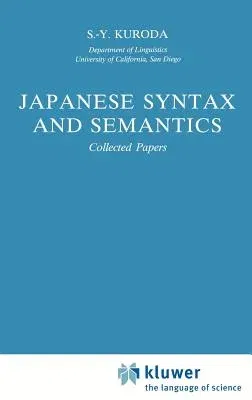S -Y Kuroda
(Author)Japanese Syntax and Semantics: Collected Papers (1992)Hardcover - 1992, 29 February 1992

Qty
1
Turbo
Ships in 2 - 3 days
In Stock
Free Delivery
Cash on Delivery
15 Days
Free Returns
Secure Checkout

Part of Series
Studies in Natural Language and Linguistic Theory
Part of Series
Mathematics and Its Applications (Soviet Series)
Print Length
376 pages
Language
English
Publisher
Springer
Date Published
29 Feb 1992
ISBN-10
0792313909
ISBN-13
9780792313908
Description
Product Details
Author:
Book Edition:
1992
Book Format:
Hardcover
Country of Origin:
US
Date Published:
29 February 1992
Dimensions:
23.39 x
15.6 x
2.24 cm
ISBN-10:
0792313909
ISBN-13:
9780792313908
Language:
English
Location:
Dordrecht
Pages:
376
Publisher:
Series:
Weight:
716.68 gm